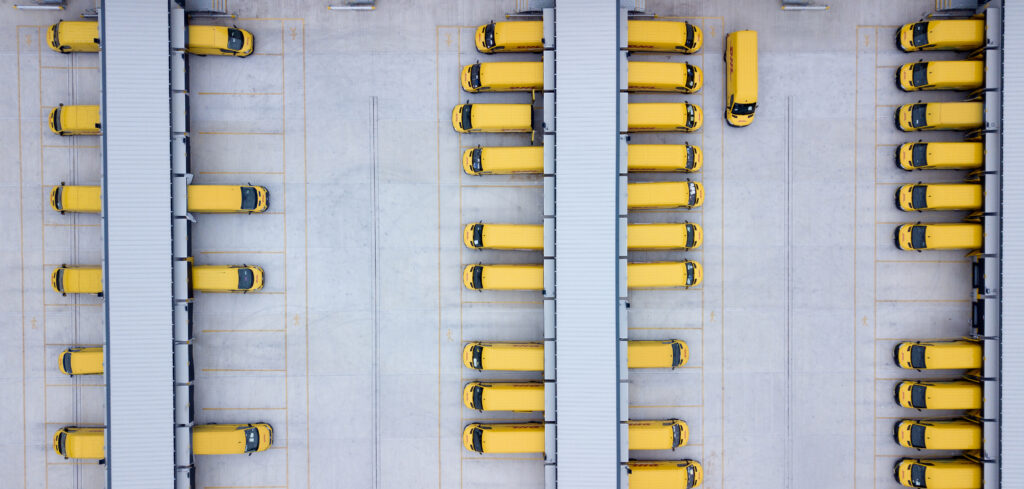DHL Express has rolled out 270 electric vans to join its last-mile fleet in the UK.
The new vans will enter operation between May and September 2022, servicing over 30 different locations, including London, Manchester, Leeds, Birmingham, Bristol, Southampton Liverpool, Sheffield, Edinburgh and Glasgow.
The zero-emissions Ford E-Transits have a range of 225km and a payload of approximately 1,000kg, similar to the diesel vans they are replacing. The bodies have been designed for ease of use for drivers. Operating at 4.25 tons, the vehicles can be driven with a standard Category B license under the driving license derogation rules for alternatively fueled vehicles, enabling an equivalent payload to be carried as in a diesel equivalent despite the additional weight of the electric powertrain. Drivers are provided with training to ensure they are familiar with the new vehicles and confident in their capabilities.
To support the EV rollout, DHL has developed its infrastructure and now operates 10 fully integrated EV-ready sites, with three more opening this spring and 13 others planned later this year – in addition to standalone charging points across the service center network. The integrated charging infrastructure is scalable to enable additional electric vehicles to join the fleet in the coming years.
Following the introduction of 50 electric vans to operate out of sites across the UK in 2021, this phase forms part of the company’s commitment to a 100% electric UK-wide courier fleet by 2030. DHL Express is working toward this goal in the UK with the intention that every new courier vehicle purchased will be electric. The group has also announced plans to have more than 80,000 e-vehicles on the road and 60% of its company-wide last-mile delivery operations electrified by 2030.
Richard Crook, director of fleet at DHL Express, said, “We’re thrilled to be sharing another update on our journey to a fully electric fleet. We’re extremely proud of the progress made so far in reducing the environmental impact of our fleet, and this next stage of rollout is a positive step toward achieving net-zero emissions by 2050.”


